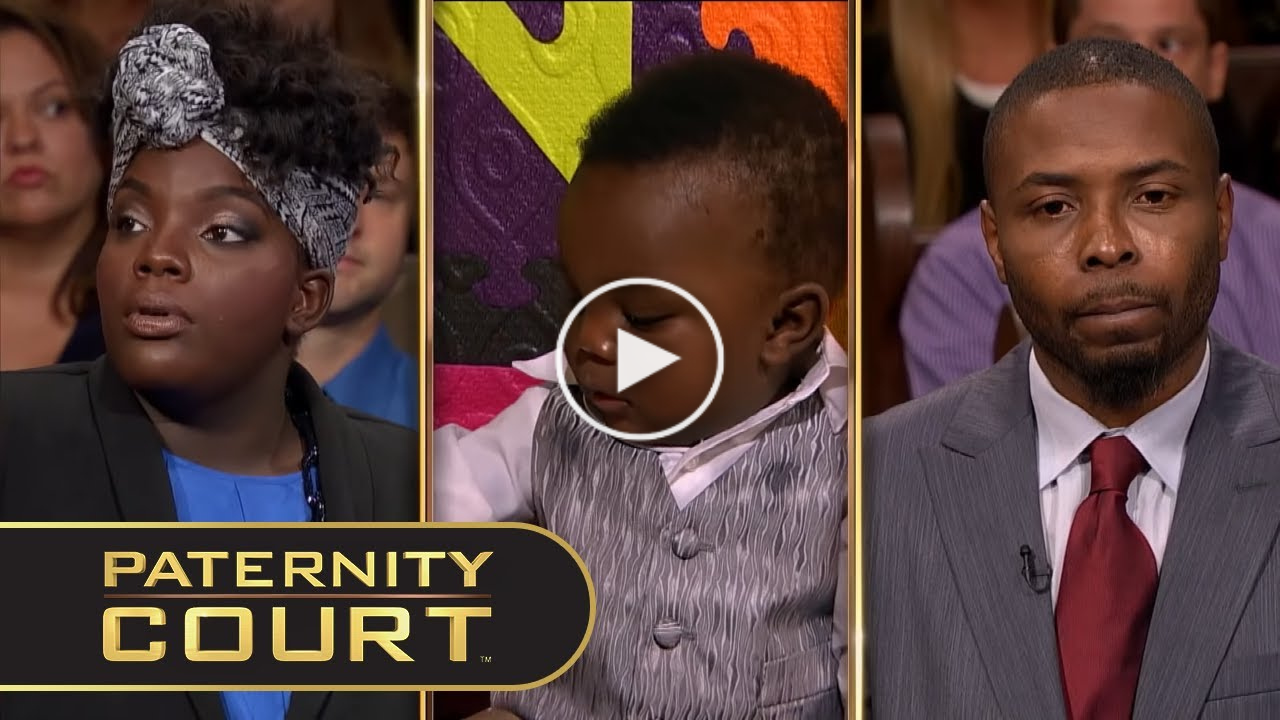The central narrative of this episode revolves around a complex and emotionally charged case. A woman named Ms. Simmons brings forth a claim that a man, Mr. Burgess, who had allegedly implored her to have his child, is indeed the father of her baby. Ms. Simmons passionately asserts, “He begged me to have his baby but disappeared when I told him I was pregnant.” This statement sets the stage for a heated and contentious dispute, instantly drawing viewers into the heart of the conflict.
Mr. Burgess, who is engaged to another woman, Ms. Arnold, vehemently denies the claim. He maintains that his relationship with Ms. Simmons was merely a casual fling and accuses her of trying to force him into the responsibility of fathering another man’s child. He states, “Our relationship was just a fling. She wants me to take care of another man’s baby.” This counterclaim adds another layer of complexity to the unfolding drama, creating a tense atmosphere of uncertainty and conflict.
Throughout the episode, the viewers are privy to a series of intense conversations and arguments between Ms. Simmons, Mr. Burgess, and Ms. Arnold. The presiding judge, demonstrating an objective and balanced approach, questions both parties about the nature of their relationship, their use of protection, and the timeline of events. The judge also probes Mr. Burgess about his relationship with his fiancée, Ms. Arnold, and challenges his certainty about not being the biological father despite admitting to having unprotected sex. The judge poses a critical question, “How can you definitively say you are not the biological father if you were having unprotected sex?” This question underscores the judge’s commitment to uncovering the truth and ensuring justice is served.
The climax of the episode arrives with the revelation of the results of a DNA test. The test confirms that Mr. Burgess is indeed the father of the 8-month-old child, Malakai. This revelation brings a sense of resolution to the intense dispute and validates Ms. Simmons’ claims. The moment is charged with emotion, as the truth finally comes to light, and the parties involved must grapple with the reality of the situation.
Following the revelation, the judge emphasizes the importance of establishing a relationship between the child and their father. She urges Mr. Burgess to step up and take responsibility for his actions and the resulting consequences. The judge advises, “The DNA test confirms that you are the father of the 8-month-old child. It’s important to establish a relationship between the child and their father. I urge you to take responsibility.”
In addition to urging Mr. Burgess to accept his responsibilities, the judge also suggests seeking counseling and resources to navigate the complex emotional landscape that such situations often entail. This advice underscores the show’s commitment to not only resolving paternity disputes but also ensuring the well-being of all parties involved, especially the child.
In conclusion, this episode of Paternity Court presents a compelling narrative of a paternity dispute, complete with emotional turmoil, heated arguments, and a final revelation. It underscores the complexities of such situations and the importance of responsibility and truth in resolving them. The episode serves as a stark reminder of the potential consequences of casual relationships and the importance of protection. It also emphasizes the critical role ofDNA testing in establishing paternity, thereby ensuring the child’s right to know and have a relationship with their biological father.
The episode is a microcosm of the real-life drama that unfolds in countless families across the world. It showcases the human capacity for denial, the desperate need for truth, and the profound impact that these paternity issues can have on all parties involved. The emotional rollercoaster that Ms. Simmons, Mr. Burgess, and Ms. Arnold ride throughout the episode is a testament to the complex dynamics that can arise from situations like these.
The judge’s role in this episode is particularly noteworthy. She not only mediates the dispute but also provides a moral compass, guiding the parties towards truth and responsibility. Her questioning is incisive, cutting through the layers of denial and evasion to reach the heart of the matter. Her final advice to Mr. Burgess to accept his responsibilities and seek counseling underscores the show’s commitment to the welfare of the child, who is often the most affected in these disputes.
The episode also highlights the importance of DNA testing in resolving paternity disputes. The DNA test serves as an incontrovertible truth in the face of Mr. Burgess’s persistent denial, ultimately forcing him to confront the reality of his actions. It underscores the critical role that science plays in our legal system, providing definitive answers in situations where human testimony may be unreliable or conflicted.
In the end, the episode is a stark reminder of the potential consequences of casual relationships and the importance of protection. It underscores the life-altering impact that a single decision can have on multiple lives and the responsibility that comes with bringing a child into the world. It serves as a cautionary tale for viewers, encouraging them to consider the potential ramifications of their actions and to act responsibly in their relationships.
Overall, this episode of Paternity Court offers a compelling exploration of a complex paternity dispute. It provides viewers with a fascinating glimpse into the human drama that unfolds in the courtroom, the emotional turmoil experienced by the parties involved, and the critical role of truth and responsibility in resolving such disputes. It’s a testament to the show’s ability to engage viewers with its blend of human drama, legal intrigue, and moral guidance.



